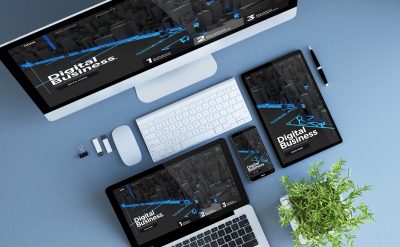The 2018 Enterprise Mobility Transformation Exchange has just ended in Carlsbad, California. A two-day conference congregated industry leaders and innovators to discuss mobility in enterprises. The conference also awarded for the first time Mobie Awards, who used innovative digital technology to overcome challenges.
Here is the list of winners for each category:
1. Best Use of Innovative Technology: Phoenix Children’s Hospital: For patients, they provide iOS devices to entertain them, provide medical records and improving the mobility of nurses.
2. Largest Successful Cloud Integration: Kaiser Permanente Continuing care: Inculcating features like visibility and verification to monitor employee activity and location. Using the mobile app and cloud-based admin solutions to inculcate the features.
3. Most effective App integration: DLL: An effective app that can be used as a sales tool to help sales reps and by customers for interaction.
The industry leaders discussed different digital transformation and mobility issues affecting enterprises.
Here are some key takeaways from the conference:
1. A mobile app should not be a single development model: The process of mobile app development cannot end with deployment. The app is a customer interaction point and sales feature for the employees. IT development teams need to innovate the apps to maintain their lifecycle. The topic was used by Joseph Rago, director of digital innovation with Ulta Beauty that empowers the associates with Mobile apps. Ulta Beauty Mobile Inventory Application (MIA) was developed to help associates to deliver a better customer experience. The app was developed for the associates to help them interact on the platform and raise queries. As the customer interaction differed in across the app the requirement also changed of the associates. Applications cannot be considered as a close- developed path they need to be tested, iterated and improved.
2. IoT is not an option: IoT is a necessity and not an option: Enterprises are now deploying the IoT devices and creating a new team for IoT development. IoT is creating new avenues to generate revenue and leading the path to customized automation. Syed Zaeem Hosian, CTO of Aeris Communication explained during the conference that the impact of IoT is beyond imagination and it creates a scalable business model.
Here are certain steps an enterprise must follow before IoT devices deployment
Step I: Reasons for implementation.
Step II: Metrics for Success.
Step III: Timeline for Deployment.
Step IV: Monetary requirement.
Before designing an IoT app that would be interacting with your network layer you should take into consideration different aspects such as power, sensors, connectivity, privacy, and analytics. As technology keeps improving it would help the enterprise implement them into present infrastructure without revamping the total model. Know more about Enterprise mobility with our whitepaper.
3. Security for Mobility applications: Enterprises are inducting mobility onto their network to ease user access. To manage the devices, organizations are turning towards Enterprise Mobility Management (EMM) and Mobile Device Management (MDM) as a security layer. MDM offers zero security against app based or OS based attacks. The mobile ecosystem is constantly evolving and organizations need tools to identify the vulnerabilities. Brain Jacome, director of applications and control of Royal Bank of Canada discussed how the organizations need to improve their mobile security strategy and innovate with better security solutions.
4. Data Storage and Access has revolutionized the healthcare: In 2013, Aetna and Inova Health system shifted from payer-provider mold. The Chief Medical Officer Sunil Budhrani delivered that how the new connected health plan meant improved access to healthcare. The data exchange between the electronic medical records (EMR) and claims data has improved the healthcare results and cost. The key is to have an improved access to data and utilizing the data to predict further steps of innovation.
5. User experience will be driving the growth: User Experience will be the heart of mobility innovation and security should be the design of the mobility infrastructure. As mobility is adopted by enterprises, there would be an increase in the exchange of information between systems- mobile and company infrastructure and network. Norman Palmer, an IT expert discussed that mobility should form the core of modern IT development. He also added that mobility would much more dependent on the UX design so that the process can be improved.
The 2018 Enterprise Mobility Transformation Exchange offered valuable lessons for the development of mobility. Mobility for enterprises will create opportunities and challenges but leveraging the current technological development can help organizations achieve their goal. To know more about mobility solutions, you can download our whitepaper.














